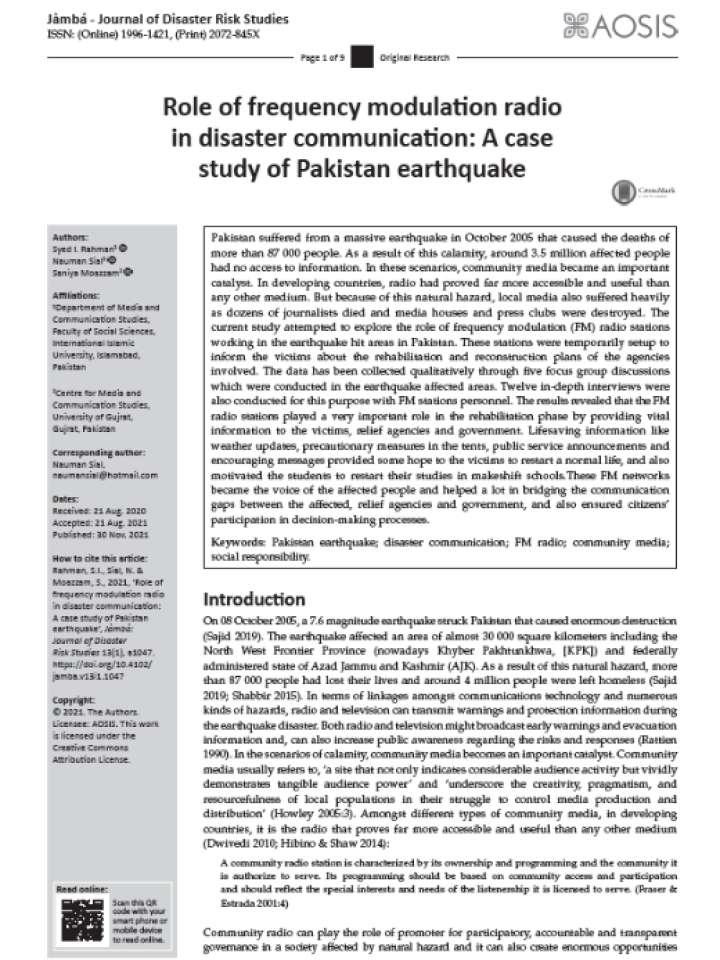Role of frequency modulation radio in disaster communication: A case study of Pakistan earthquake
This study attempted to explore the role of frequency modulation (FM) radio stations working in the earthquake hit areas in Pakistan. Pakistan suffered from a massive earthquake in October 2005 that caused the deaths of more than 87,000 people. As a result of this calamity, around 3.5 million affected people had no access to information. In these scenarios, community media became an important catalyst. In developing countries, radio had proved far more accessible and useful than any other medium. But because of this natural hazard, local media also suffered heavily as dozens of journalists died and media houses and press clubs were destroyed. These post-earthquake FM stations were temporarily setup to inform the victims about the rehabilitation and reconstruction plans of the agencies involved. The data has been collected qualitatively through five focus group discussions which were conducted in the earthquake affected areas. Twelve in-depth interviews were also conducted for this purpose with FM stations personnel.
The results revealed that the FM radio stations played a very important role in the rehabilitation phase by providing vital information to the victims, relief agencies and government. Lifesaving information like weather updates, precautionary measures in the tents, public service announcements and encouraging messages provided some hope to the victims to restart a normal life, and also motivated the students to restart their studies in makeshift schools.These FM networks became the voice of the affected people and helped a lot in bridging the communication gaps between the affected, relief agencies and government, and also ensured citizens’ participation in decision-making processes.
Explore further

